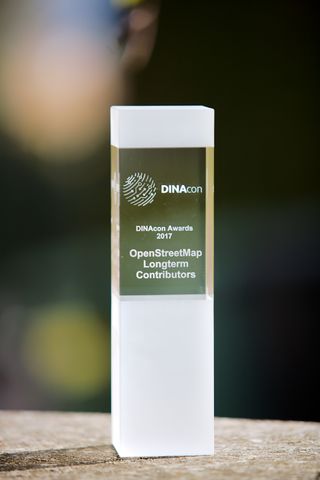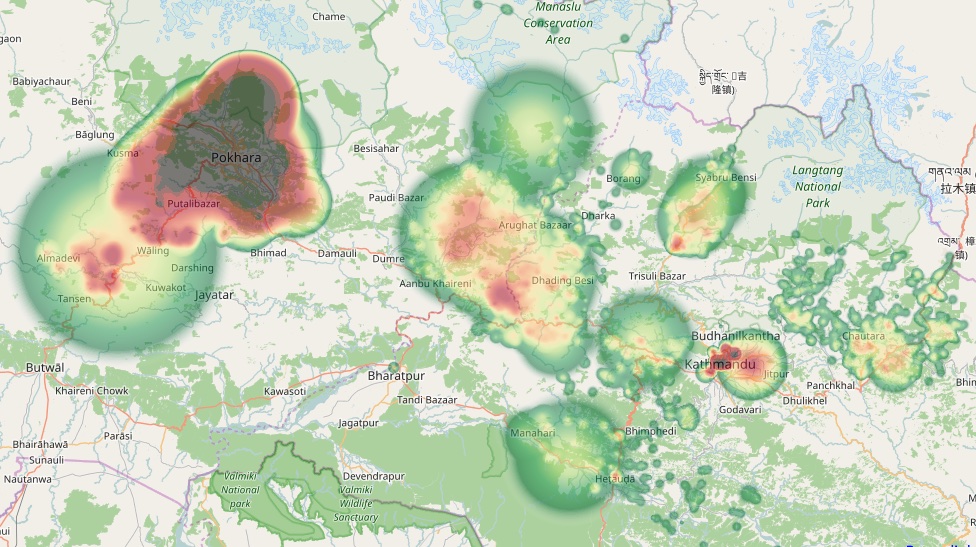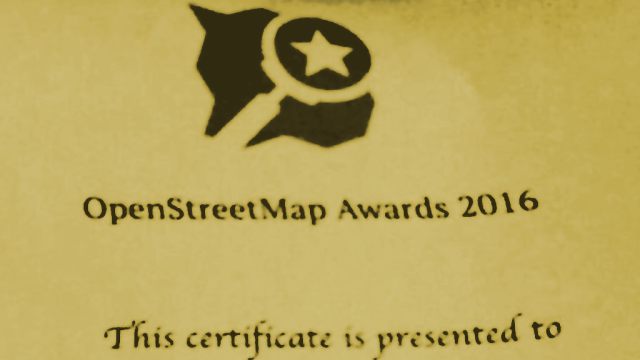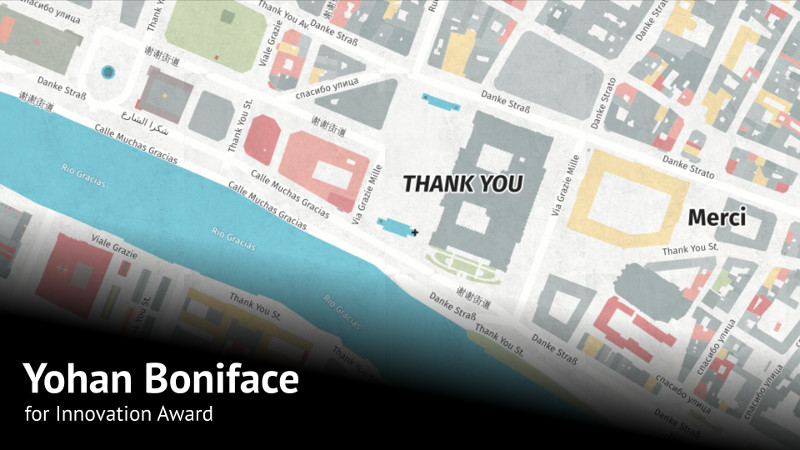DINACon digital sustainability
 The OpenStreetMap community recently received an award at the DINACon conference on digital sustainability.
The OpenStreetMap community recently received an award at the DINACon conference on digital sustainability.
OpenStreetMap is showing itself to be sustainable in various ways. Our database is available to download in its entirety, which helps to ensure the hard work of our contributors will always live on regardless, but our core servers keep humming thanks to many generous donations to OSMF over the years, as well as funding from our corporate membership programme. Most important of all, our community continues to thrive, attracting new members, while retaining wonderfully dedicated long-term contributors (to whom this award was dedicated). Thank you to everyone who helps make OpenStreetMap sustainable.
Thanks also to Simon Poole, Stefan Keller, and Michael Spreng who accepted the award, as well as running an OpenStreetMap session at this conference.
While we’re on the topic of awards…
OpenStreetMap Awards 2017
During our own conference, the international State Of the Map, in Japan back in August, we held the OpenStreetMap Awards ceremony. If you missed it, these are the results:
- The Core Systems Award went to Kevin Bullock – For making available two new satellite imagery layers directly from DigitalGlobe, which drastically increased coverage in OSM editors
- The Innovation Award went to Tobias Zwick – For the StreetComplete android application, which drives thousands of attribute edits to OSM
- The Influential Writing Award went to Ramani Huria – Great blog posts about community, mapping, techniques for OpenStreetMap in Tanzania and Africa.
- The Greatness in Mapping Award went to Jochen Topf – For the global polygon fixing effort, which updated all the old-style multipolygons and continues to fix thousands of errors every day
- The Expanding the Community Award went to Pete Masters – For 4 years as Missing Maps project coordinator, introducing countless contributors to OSM, supporting communities in Bangladesh, DRC, CAR and many other countries. Remarkable outreach for humanitarian mapping & OSM in general.
- The Improving Latin America Award went to GeoChicas – Working against sexism and making projects to integrate OSM’s users
- The Improving Africa Award went to the State of the Map Africa Organising Team – For putting huge efforts into making SOTM happen in Africa for the very first time
- The Improving Asia Award went to Humanitarian OpenStreetMap Team Indonesia – For training disabled people and their carers to map the areas they live. A great example of how inclusivity and diversity can by both fostered and supported by OpenStreetMap
- The Ulf Möller Memorial Award went to Martin Raifer – For the Overpass Turbo web based data mining tool.
The OSM awards website has a list of all nominees, and details of why they were nominated (also on this blog). Well worth a read. It’s a catalogue of spectacular individual contributions made to OpenStreetMap throughout the 2016/2017, and all of these nominees deserve our congratulations.



